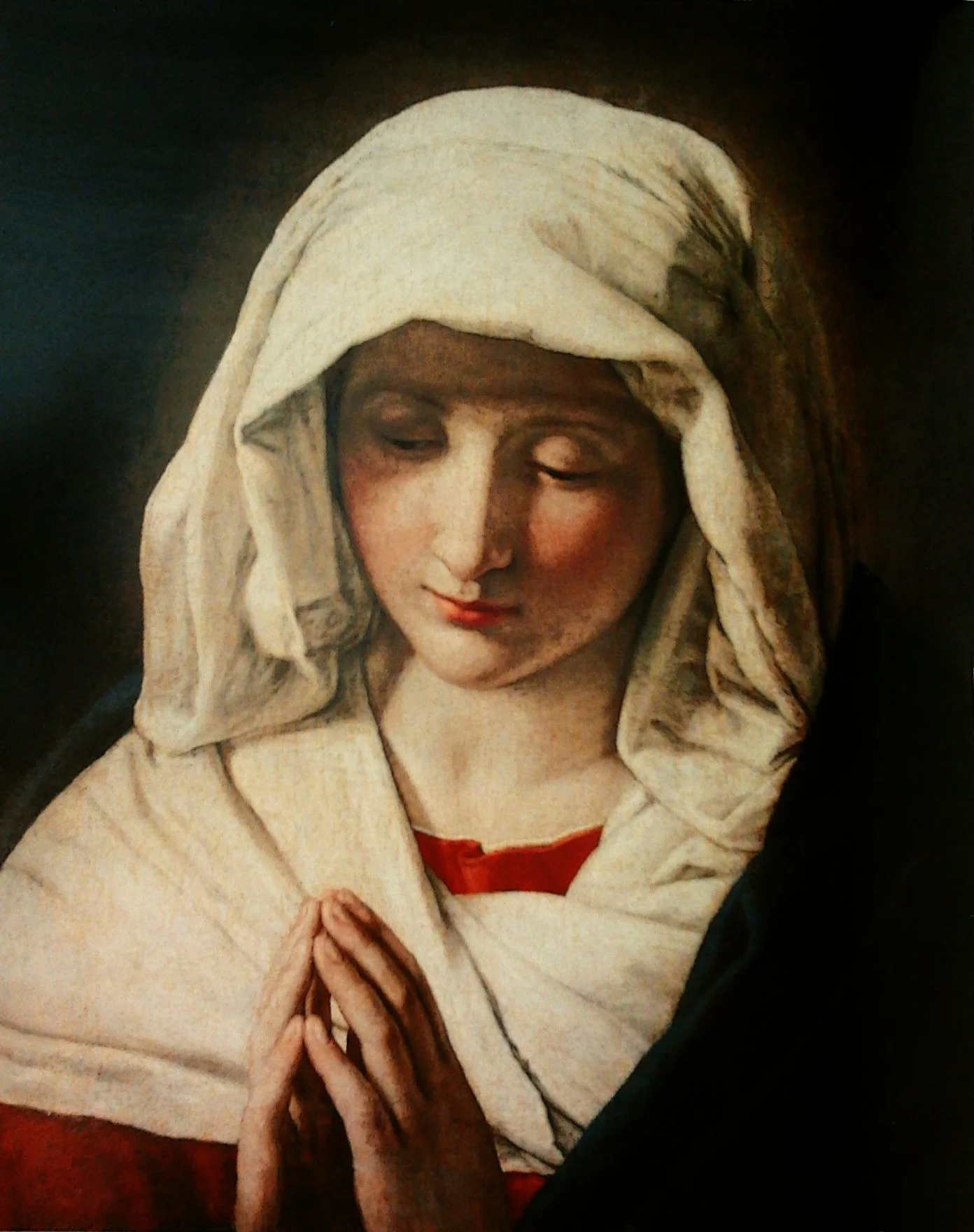Depictions of the Virgin Mary in Italian Solo Song of the 17th Century
"A Virgin in Prayer" is an oil on canvas painting by Giovanni Battista Salvi da Sassoferrato, painted in the 17th century. It is currently housed in the National Gallery, London.
During the 17th century, many composers turned to the theme of the Virgin Mary, seeking to praise her or depict her sorrow at Christ's crucifixion in their works. Some of these compositions were particularly focused on portraying her grief and desperation in a powerful and moving way.
One of the most notable works from this period is Giovanni Felice Sances' ⏵︎ Pianto della Madonna, which was published in 1638. This piece is particularly noteworthy for its use of the chromatic form of the descending tetrachord ostinato in a vocal work. By alternating recitative and triple-time ostinato sections, Sances was able to create a powerful and poignant portrayal of the lamenting Madonna as a viable dramatic character. Similarly, Claudio Monteverdi's ⏵︎ Pianto della Madonna is a non-liturgical sacred piece (contrafactum of ⏵︎ Lamento d'Arianna) that articulates Marian piety at its most intense. This mournful lamentation portrays Mary's grief and desperation after the Crucifixion of her son.
"The Entombment" by Giovanni Battista Salvi da Sassoferrato, painted in the 17th century, currently housed in the Palazzo Apostolico Vaticano.
Francesca Caccini’s ⏵︎ Maria, dolce Maria showcases Francesca's ability to convey word meaning through sound. The song praises the Virgin Mary as a comforter, with a simple basso continuo and subtle chromaticisms. The climax on "ogni affano acqueta" features a powerful discord followed by relief in the cadence. It is a haunting and moving example of early Italian solo song, descriptive in mood, and satisfying in form and content.
An example of the combination of "high" and "low" elements in 17th-century music repertoire is Tarquinio Merula's ⏵︎ Hor ch'è tempo di dormire, a lullaby of the Madonna to the Christ-Child. This piece, which was printed in Merula's secular collection 'Curtio precipitato et altri capricci... a voce sola' in Venice in 1638, features a simple two-note bass figure (A-Bb) over which Mary's presentiment of Christ's Passion is set as a series of strophic variations.
"Madonna with the Christ Child" by Giovanni Battista Salvi da Sassoferrato, painted circa 1640s, is a delicate depiction of the Virgin Mary and Infant Jesus in 17th Century Italian Art.
The painting is currently housed in the National Gallery of Art in Washington, D.C.
Another interesting composition from this period is Orazio Michi’s ⏵︎ Sola frà suoi più cari, which appears in four different sources. This expressive and declamatory lament is based on a Canzone by Giambattista Marino and portrays the Virgin Mary's grief and despair in the aftermath of Christ's crucifixion. Similarly, Antonia Bembo’s ⏵︎ Lamento della Vergine addresses the crucifixion from Mary's perspective and is set in F minor to lend its effect to the scene of acute distress.
If you're interested in exploring these powerful and moving works, be sure to check out my playlist ⏵︎ Depictions of Virgin Mary in 17th Century Italian Song featuring the pieces mentioned above and others. Transcriptions of these works are also available for purchase at my website for those who want to study them in greater depth.
References:
Colzani, A. (Ed.). (1997). Deutsch-italienische Beziehungen in Der Musik Des Barock. Hildesheim: Georg Olms Verlag.
Fontijn, C. (2006). Desperate Measures: The Life and Music of Antonia Padoani Bembo. Oxford University Press.
Fontijn, C. (2018). The Virgin Voice: Representations of Mary in Seventeenth-Century Italian Song. In M. E. Steinitz (Ed.), The Cambridge History of Sixteenth-Century Music (pp. 203-221). Taylor & Francis.
Kaleva, D. (2020). Contextual History through Rhetorical Visuality in Performing Monteverdi's Il pianto della Madonna. Early Music, 48(4), 683-696.
Raney, C. (1980). Francesca Caccini, Musician to the Medici and her Primo Libro. (Ph.D. dissertation). New York University.
Ziane, A. (2020). Orazio Michi: Contemporary Testimonials, Documents, and Work. Rome: LIM.


